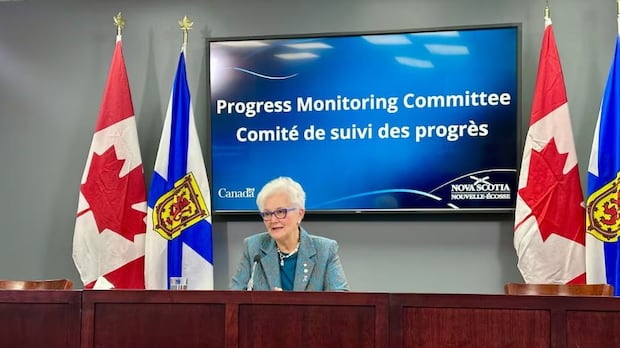CBRM hazmat unit moved to full-time fire service because volunteers too slow, chief says

Cape Breton Regional Municipality’s full-time fire service is now running the hazardous materials unit because volunteers were taking too long to get to the station before going out on calls, the municipality’s fire chief says.
Mark Bettens made the move in April, saying he had to act quickly to get control of the unit’s specialized gear.
But the hazmat unit’s volunteer chief at the time, Gary Kaiser, said he and other firefighters were upset after CBRM officials moved four vehicles, two boats and other equipment out of a rural station and put it in Sydney with no notice.
Kaiser said it was a slap in the face.
“I was blind-sided and in a state of shock,” he told Information Morning Cape Breton last month. “I was totally surprised. I couldn’t believe this was happening.”
After being grilled at a CBRM fire and emergency services committee meeting on Thursday, Bettens said he knew if he was going to make a change, it had to be swift so the full-time firefighters could use the gear right away.
Chief apologizes for execution
“I can’t have those resources sitting in Grand Lake Road when my crew to operate them is on Victoria Road,” he said.
During the committee meeting, Coun. Steve Parsons asked several times why the change was made and whether it had to be done in a way that treated volunteers poorly.
Bettens told the committee he should have handled things differently.
“My execution, I’ve apologized for the quickness of it and for anybody that felt that it was that way,” he told reporters after the meeting, “but in actual fact … it has to be done that way.”
Bettens said it did not make sense to have specialized gear like drones or rope-rescue tripods locked up at a volunteer station when they could be used on regular calls.
During the committee meeting, Deputy Chief Craig MacNeil admitted the hazmat unit’s assembly time — or how long it takes volunteers to reach the station and then go out on a call — was sometimes reaching up to an hour.
Bettens told reporters that members of the specialized unit don’t necessarily live close to the station like they would if they were volunteering in a community department, but he said their assembly time was still too long.
“My assembly time was looking at anything that was greater than 15 minutes would be an issue,” he said.
The hazmat unit attended about 10 calls last year and is usually called out when needed to support other departments.
Volunteers are appreciated, but in this case it was much faster to hand the task to full-time firefighters, Bettens said.

Parsons also said changing the hazmat unit from a volunteer-run department to the career service was a major decision that should have been run by the committee first.
Coun. Gordon MacDonald agreed.
“If there was issues with the hazmat, we haven’t heard about them,” he said.
“This committee needs a little bit more respect. We don’t have to be … part of the operations, but we should know what’s happening within the fire services.”
Bettens agreed, saying the committee should have received advance notice of the decision.
The committee voted unanimously to have CBRM’s legal department review the committee’s responsibilities and clarify its role in major decisions.
MORE TOP STORIES




